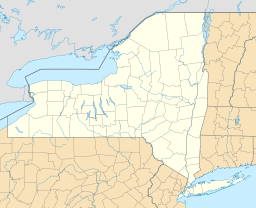Algerine Hill facts for kids
Quick facts for kids Algerine Hill |
|
|---|---|
| Highest point | |
| Elevation | 2,244 feet (684 m) |
| Geography | |
| Location | Furnaceville, New York, U.S. |
| Topo map | USGS South Valley |
Algerine Hill is a natural landform in New York state. It is a mountain located in the Central New York region. This hill is found south of a place called Furnaceville. Furnaceville is a small community in Decatur, New York.
Contents
Exploring Algerine Hill
Algerine Hill is an interesting part of New York's landscape. It offers a glimpse into the natural beauty of the state. Understanding its features helps us learn about geography.
Where is Algerine Hill Located?
Algerine Hill is found in the central part of New York state. It is specifically located in Otsego County. This area is known for its rolling hills and green forests. The hill is near the community of Furnaceville. Furnaceville is part of the town of Decatur.
Geographic Details
The exact spot of Algerine Hill is marked by specific coordinates. These are 42 degrees, 38 minutes, 58 seconds North. It is also 74 degrees, 39 minutes, 55 seconds West. These numbers help pinpoint its location on a map. The United States Geological Survey (USGS) has mapped this area. Their "South Valley" map shows Algerine Hill clearly.
How Tall is Algerine Hill?
Algerine Hill stands at a height of 2,244 feet. This is about 684 meters above sea level. While not one of the tallest mountains, it is still a significant elevation. It contributes to the varied terrain of New York.
What Does Its Height Mean?
The height of Algerine Hill affects its environment. Different plants and animals can live at various elevations. The hill's height also influences local weather patterns. It is a part of the larger Appalachian Mountain system. This system stretches across much of eastern North America.
Nature Around Algerine Hill
The area around Algerine Hill is rich in nature. It is typical of the Central New York region. You can expect to find many types of trees and plants. These include deciduous trees that change color in the fall.
Wildlife and Environment
The forests and natural areas provide homes for wildlife. You might see deer, rabbits, and various birds. The environment is important for local ecosystems. Protecting these natural spaces helps keep the region healthy. It also allows people to enjoy outdoor activities.



